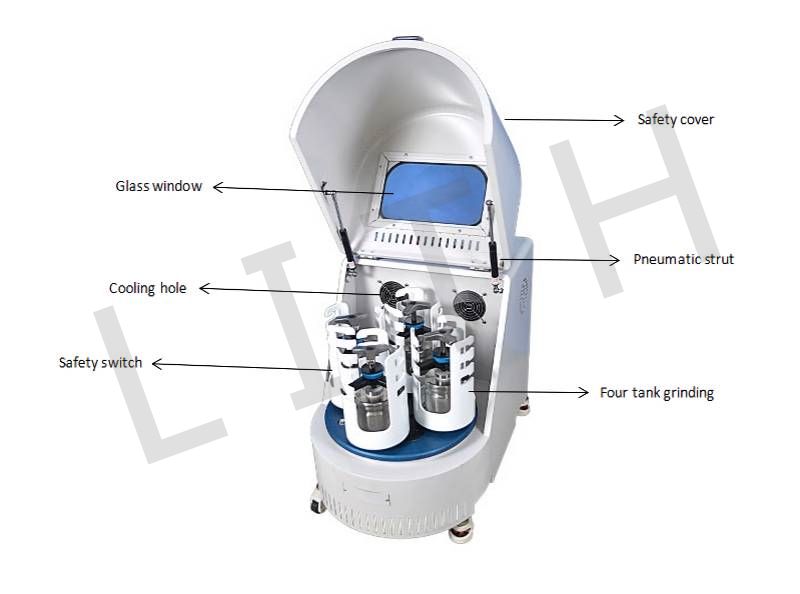In the realm of material processing and research, the lab jar mill stands out as a versatile and indispensable tool, revolutionizing the way scientists and engineers approach grinding, milling, and homogenization processes. In this technical blog post, we will delve into the capabilities, applications, and advancements associated with the lab jar mill.
1. Understanding the planetary ball mill:
The lab jar mill is a sophisticated apparatus designed for grinding, milling, and blending various materials within a controlled environment. It comprises a set of jars, often made of high-quality stainless steel or ceramic, which house grinding media and the materials to be processed. The jars are securely rotated on a horizontal axis, creating a cascading effect that ensures efficient grinding and uniform mixing.
2. Versatility in Material Processing:
One of the key strengths of the ball mill grinder lies in its versatility across a wide range of materials. From brittle ceramics to tough metals, the mill can effectively process diverse substances, making it an invaluable asset in laboratories engaged in material science, pharmaceuticals, and nanotechnology research.
3. Applications Across Industries:
The applications of lab ball mill span multiple industries. In material science, researchers utilize these mills to finely grind powders and create homogenous blends critical for the development of advanced materials. In the pharmaceutical sector, the precise milling capabilities aid in drug formulation and optimization. Furthermore, in nanotechnology research, the lab jar mill plays a pivotal role in the production of nanoparticles with controlled size and distribution.
4. Advancements in Design and Technology:
Recent advancements have propelled lab jar mills into a new era of efficiency and precision. Enhanced control systems allow researchers to fine-tune rotational speeds, milling times, and temperature conditions, providing unprecedented control over the milling process. Additionally, the incorporation of safety features ensures secure operation, making the lab jar mill a reliable and user-friendly tool.
5. Achieving Consistency in Results:
Consistency is paramount in research and development, and the lab jar mill excels in delivering reproducible results. The combination of optimized jar geometries, quality grinding media, and precise control mechanisms contributes to the repeatability of experiments, fostering reliable outcomes for researchers and engineers.
6. Future Trends and Innovations:
As technology continues to advance, we anticipate further innovations in lab jar mill design. Integration with data analytics and automation is likely to streamline processes, while improvements in jar materials and coatings will enhance durability and expand the range of processable materials.
In conclusion, the lab jar mill stands at the forefront of material processing, offering scientists and engineers a powerful tool for achieving precision and efficiency in their research endeavors. As we look ahead, the continued evolution of this technology promises to unlock new possibilities and applications across a myriad of scientific disciplines.




 Online service
Online service +86 13174506016
+86 13174506016
